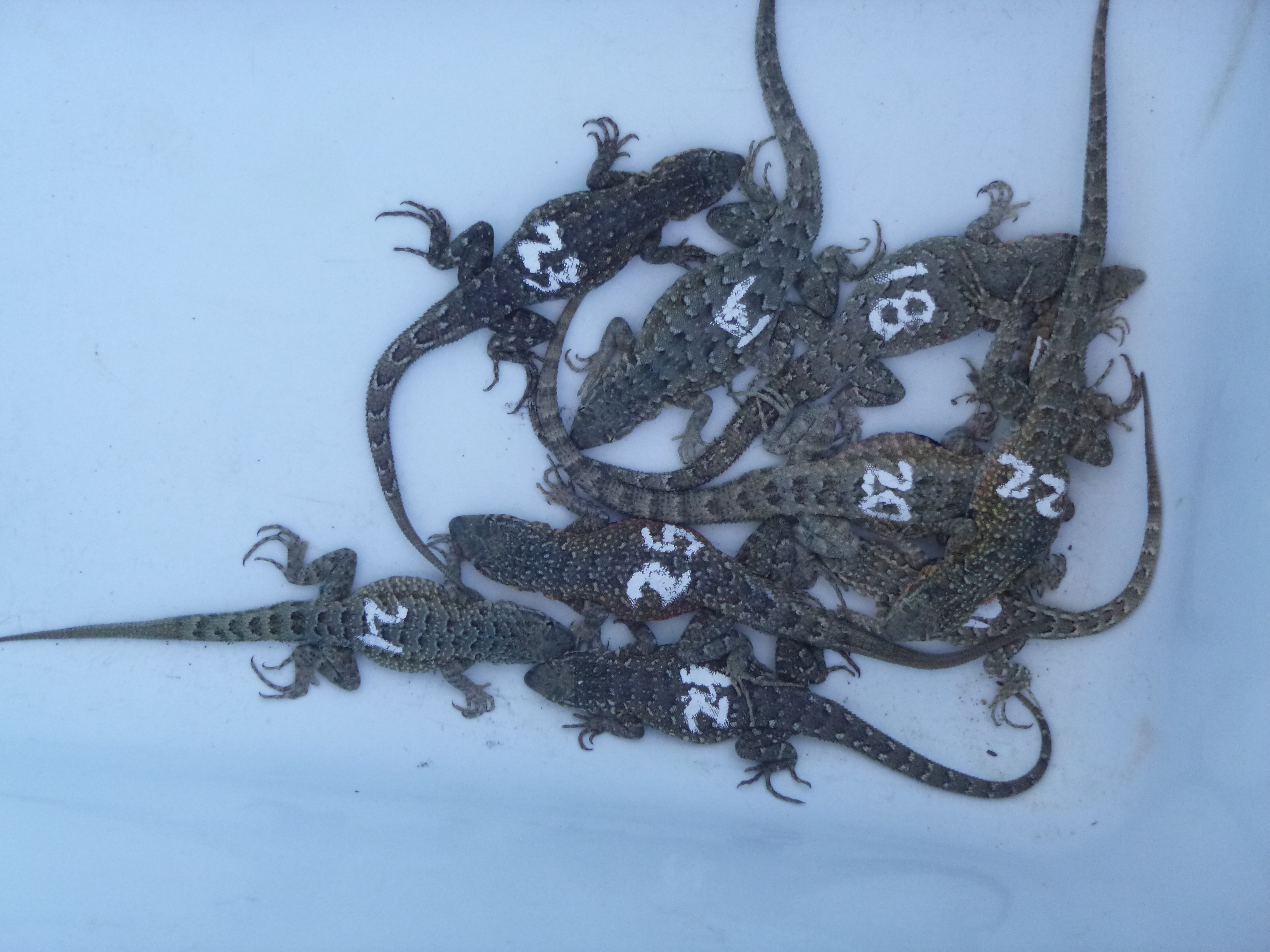By Helaina Lindsey, Ichthyology Lab
I left Isla Natividad with six blisters on my feet, two ways to say “lizard” in Spanish, and thermal ecology data for thirty-seven impossibly fast reptiles.
Every inch of the island was covered in my chosen study species: Uta stansburiana, the side-blotched lizard. At first glance these lizards are unremarkable; they are small and brown, infesting every home in town and scattering like cockroaches when disturbed. However, if you’re able to get your hands on one, you’ll see there’s more to them than meets the eye. They are adorable, managing to look both impish and prehistoric, and have a brilliantly colored throat. They are heliotherms, meaning that they rely on the sun to maintain their body temperature. I aim to explore the nature of their behavioral thermoregulation, but first I need to catch them.

It is 9:00 AM, and I have already been awake for three hours. One of the many secrets to catching lizards is to wake up before they do. Like most people, they are sluggish and slow in the morning, and thus much easier to catch. I stalk around the edges of a dilapidated palapa that sits on the beach in front of our cabins. My lizard-catching partner, Mason Cole, circles around to the other side of the board that I am eying. We each crouch next to one end of the board, taking a moment to make sure that our lizard nooses are ready to go. The nooses in question are crudely constructed metal poles with a loop at the end to tie a slip knot of dental floss that can be slipped over the lizard’s head. We lift up one end of the board and I duck my head underneath it, scanning for movement. I see a small brown flash dart across the sand, and I yell “Lagartija!” We stick our nooses under the board, angling to trap the little guy between the two of us. He puts up a fight, fleeing under another board, then back to the original. Eventually I get my dental floss loop around his neck and jerk up, and the hunt is over. I gently take the loop off the lizard’s neck and flip him over, examining his underside. We record his sex and throat color, then I take the temperature of the lizard and the sand under the board with an infrared temperature gun. Before I take a picture of him, I pull out a tiny bottle of white-out and paint a “23” on his back, marking him as my 23rd lizard caught on the trip so far. I snap a few photos, then place him in the small cooler that is draped around my shoulder. The cooler is filled with the other lizards I have caught today, looking like a team of football players in numbered jerseys.

When we have caught enough lizards, we begin the familiar trek up to the research house where I have been running my experiments. I immediately get to work, setting up my row of wooden tracks with heat lamps at one end. As the tracks heat up, I measure and weigh the lizards before placing them back in the cooler, now with a frozen water bottle to cool them down a little. For my experiment, I am looking at how quickly the lizards heat up and how their behavior affects their body temperature, so I want them all to start at a similar body temperature. I place a lizard in the middle of each track, then cover the track with a sheet of mesh. Because of the heat lamps at one end, each lizard has a temperature gradient ranging from 25o C to 45o C, allowing them to move up and down the track to control their body temperature. After allowing them to acclimate for 5 minutes, I begin taking their temperature every 2 minutes for an hour while also taking note of their behavioral changes.

The last step, of course, is to release them back into the wild, confused but otherwise unharmed. With this data I hope to quantify how the lizards on this island thermoregulate, compare them to other populations of Uta stansburiana, and hypothesize how they may react to climate change and rising global temperatures.

